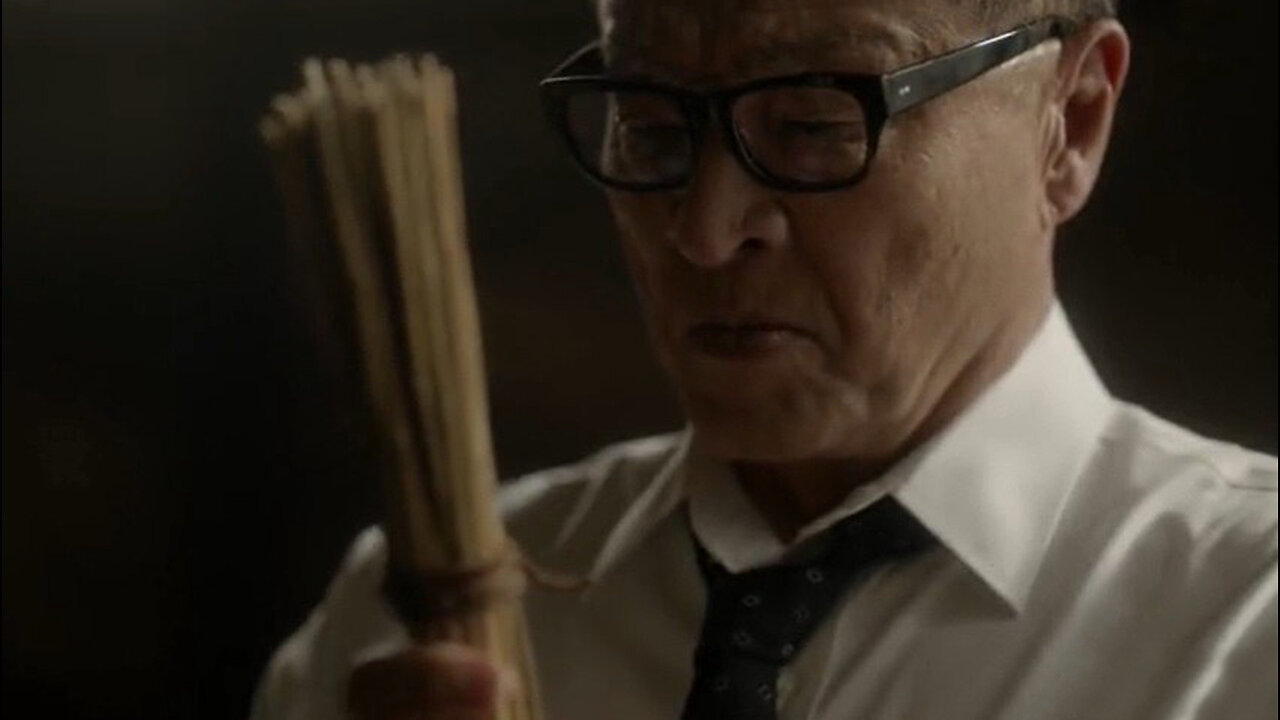Premium Only Content

The Man in the High Castle - Meditations
Nobusuke Tagomi meditations (Minister of Commerce of the Japanese Pacific States). In Philip K. Dick's novel "The Man in the High Castle," Nobusuke Tagomi is a central character whose meditations and internal reflections are critical to the narrative's exploration of identity, morality, and the nature of reality. Tagomi, a high-ranking trade official in the Pacific States of America (a Japanese-controlled territory on the West Coast of the former United States), undergoes significant spiritual and philosophical experiences throughout the story.
### Tagomi's Meditative Journey
1. **Inner Conflict and Morality:**
Tagomi is depicted as a deeply moral and introspective man. His meditations often revolve around the ethical implications of his actions and the world he inhabits. He grapples with the moral complexities of collaborating with the Nazis and Japanese authorities, reflecting on the nature of good and evil in a world dominated by totalitarian regimes.
2. **Cultural and Spiritual Reflections:**
Tagomi's character is imbued with a strong sense of Japanese culture and Zen Buddhism. His meditations often draw on Zen practices, emphasizing mindfulness and the search for inner peace. This spiritual framework provides him with a means to cope with the external chaos and moral ambiguity he faces.
3. **The I Ching and Alternate Realities:**
Tagomi frequently consults the I Ching, an ancient Chinese divination text, to guide his decisions. The I Ching's responses often lead him into deep contemplation about fate, destiny, and the possibility of alternate realities. This reflects one of the novel's central themes: the existence of multiple realities and the fluidity of history.
4. **The Vision of Alternate America:**
A pivotal moment in Tagomi's journey occurs when he experiences a profound vision or alternate reality. During a meditative state, he perceives a world where the Allies won World War II, contrasting sharply with the dystopian reality he knows. This vision profoundly impacts him, shaking his understanding of reality and prompting deeper existential reflection.
5. **Art and Enlightenment:**
Tagomi's encounter with a piece of American jewelry, a small, handcrafted pin, becomes a symbol of authentic beauty and human creativity untouched by the regimes’ oppressive powers. His contemplation of this object leads to an epiphany about the importance of preserving human dignity and artistic expression in the face of tyranny.
6. **Acts of Resistance:**
Tagomi's meditations ultimately inspire him to take a stand against the injustice he sees. His decision to protect a Jewish man, Frank Frink, and his act of defiance against the Nazi officials are driven by his deep-seated moral convictions and spiritual insights. These actions signify his personal resistance against the pervasive evil of the world he lives in.
### Conclusion
Nobusuke Tagomi's meditations in "The Man in the High Castle" are a crucial element of the novel, providing a window into his inner life and the broader philosophical questions posed by the story. Through his reflections, Tagomi embodies the struggle for moral clarity and spiritual peace in a dystopian world, highlighting Philip K. Dick's exploration of alternate realities and the enduring quest for truth and goodness.
-
 UPCOMING
UPCOMING
The Bubba Army
20 hours ago| Bubba the Love Sponge® Show | 9/02/2025
958 -
 LIVE
LIVE
FyrBorne
9 hours ago🔴Warzone M&K Sniping: I Can Be Your Idol (For Sniping)
639 watching -
 34:26
34:26
CarlCrusher
11 hours agoJake Paul's Crew vs Ancient Skinwalker Canyon
1612 -
 16:07
16:07
Chris From The 740
23 hours ago $0.04 earnedMy BIGGEST Problem with the Ruger RXM – FIXED by Liberty Build Co!
1061 -
 13:29
13:29
Professor Gerdes Explains 🇺🇦
10 hours agoUS Deploys Warships to Venezuela's Coast: A Show of Force Against Putin's Ally
6 -
 12:12
12:12
The Shannon Joy Show
12 hours ago🔥Carcinogens & Fetal Cells In Your New ‘Universal Vaccine’🔥
5422 -
 10:38
10:38
ariellescarcella
10 hours agoOnlyFans Models Fake Being Trans : Queer Activists Are PISSED
86 -
 8:00
8:00
Congressman Eli Crane
15 hours agoThe D.C. Crime Problem | Democrats' Greatest Lies – Vol.2
17.1K9 -
 17:54
17:54
Dr Disrespect
17 hours agoDR DISRESPECT vs VAN DAMME in Hitman 3
72.8K11 -
 2:05:26
2:05:26
Side Scrollers Podcast
19 hours ago4Chan SUES UK Government + Craig Has Mental Illness Fatigue + Knight Rider REBOOT | Side Scrollers
32.4K8